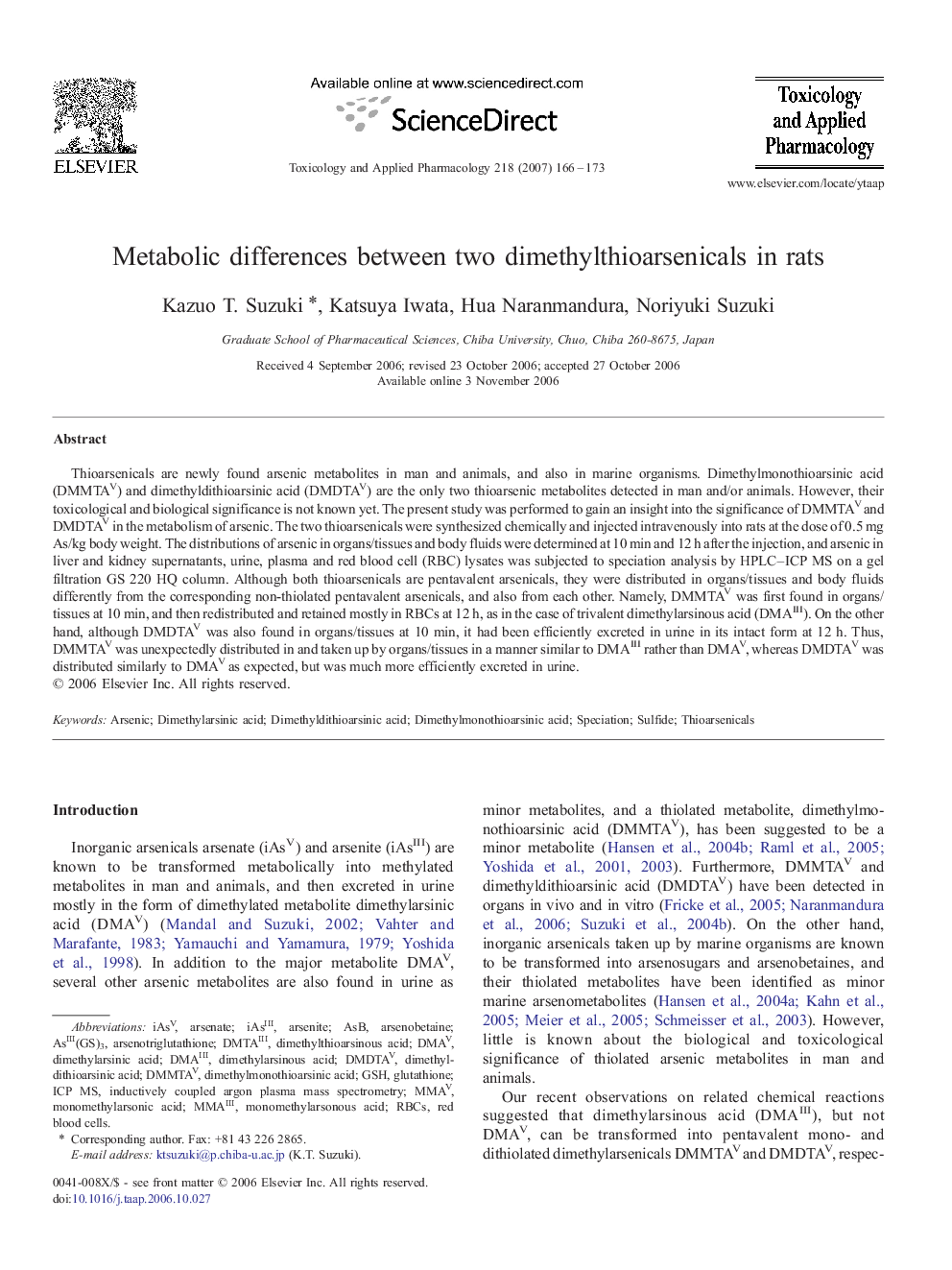| Article ID | Journal | Published Year | Pages | File Type |
|---|---|---|---|---|
| 2571071 | Toxicology and Applied Pharmacology | 2007 | 8 Pages |
Thioarsenicals are newly found arsenic metabolites in man and animals, and also in marine organisms. Dimethylmonothioarsinic acid (DMMTAV) and dimethyldithioarsinic acid (DMDTAV) are the only two thioarsenic metabolites detected in man and/or animals. However, their toxicological and biological significance is not known yet. The present study was performed to gain an insight into the significance of DMMTAV and DMDTAV in the metabolism of arsenic. The two thioarsenicals were synthesized chemically and injected intravenously into rats at the dose of 0.5 mg As/kg body weight. The distributions of arsenic in organs/tissues and body fluids were determined at 10 min and 12 h after the injection, and arsenic in liver and kidney supernatants, urine, plasma and red blood cell (RBC) lysates was subjected to speciation analysis by HPLC–ICP MS on a gel filtration GS 220 HQ column. Although both thioarsenicals are pentavalent arsenicals, they were distributed in organs/tissues and body fluids differently from the corresponding non-thiolated pentavalent arsenicals, and also from each other. Namely, DMMTAV was first found in organs/tissues at 10 min, and then redistributed and retained mostly in RBCs at 12 h, as in the case of trivalent dimethylarsinous acid (DMAIII). On the other hand, although DMDTAV was also found in organs/tissues at 10 min, it had been efficiently excreted in urine in its intact form at 12 h. Thus, DMMTAV was unexpectedly distributed in and taken up by organs/tissues in a manner similar to DMAIII rather than DMAV, whereas DMDTAV was distributed similarly to DMAV as expected, but was much more efficiently excreted in urine.
